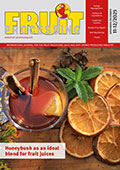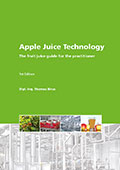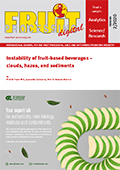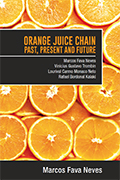Frozen fruits market to reach USD 9.8 billion by 2032
According to DataIntelo, in 2023, the global frozen fruits market size is estimated to be valued at approximately USD 5.7 billion and is projected to reach USD 9.8 billion by 2032, reflecting a compound annual growth rate (CAGR) of …

Market summary
According to DataIntelo, in 2023, the global frozen fruits market size is estimated to be valued at approximately USD 5.7 billion and is projected to reach USD 9.8 billion by 2032, reflecting a compound annual growth rate (CAGR) of 6.2 % from 2024 to 2032. The growth of this market is driven by increasing consumer demand for convenient and healthy food options, alongside advancements in freezing technology that preserve the nutritional content and taste of fruits.
The frozen fruits market has gained remarkable traction over the past decade, emerging as a convenient and nutritious alternative to fresh fruits. With changing consumer lifestyles, a growing preference for ready-to-use food products, and the increasing awareness of food wastage, frozen fruits have become a staple in many households and food service establishments worldwide. This market includes a wide variety of fruit products that are preserved through freezing techniques to maintain taste, texture, and nutritional value over time.
Market drivers
Several factors are contributing to the growth of the frozen fruits market. Chief among them is the rising demand for convenience food driven by urbanisation and hectic lifestyles. Consumers, particularly in developed and emerging economies, are leaning toward time-saving meal solutions that do not compromise on health. Frozen fruits offer year-round availability, consistent quality, and longer shelf life, making them highly desirable.
Moreover, the expanding popularity of smoothies, yogurts, desserts, and health-focused snacks has further propelled demand. Foodservice industries and fast-food chains increasingly rely on frozen fruits to streamline their operations without compromising flavour or freshness.
Technological advancements
The adoption of advanced freezing technologies, such as IQF (Individual Quick Freezing), has revolutionised the market by preserving fruit quality more effectively. These innovations ensure minimal nutrient loss and better texture retention, which appeal to health-conscious consumers. Furthermore, improved packaging solutions have enhanced product visibility and extended product shelf life, helping manufacturers minimise waste and improve logistics.
Regional insights
North America and Europe currently lead the global frozen fruits market, driven by high consumer awareness and well-established cold chain infrastructures. However, the Asia-Pacific region is poised for significant growth, thanks to increasing disposable incomes, changing dietary patterns, and growing urban populations in countries like China and India. Governments and private sectors in these regions are investing in better refrigeration and distribution networks, further supporting market expansion.
Challenges and constraints
Despite the optimistic outlook, the market faces challenges such as seasonal availability of raw materials, high storage and transportation costs, and consumer perception regarding preservatives and freshness. Additionally, fluctuations in agricultural yield due to climate change can impact the supply chain and pricing.
Future outlook
The frozen fruits market is expected to grow robustly in the coming years, driven by innovation, greater health awareness, and expanding retail distribution. Sustainable sourcing practices and eco-friendly packaging are anticipated to become more important, with companies focusing on reducing environmental impact while meeting consumer demand.
Competitive landscape
Major key players in the market are:
- Dole Food Company, Inc.
- Ardo NV
- Hain Celestial Group, Inc.
- Kerry Group plc
- SunOpta Inc.
- AGRANA Beteiligungs-AG
- Welch Foods, Inc.
- Del Monte Foods, Inc.
- SICOLY Cooperative
- Titan Frozen Fruits
- J.R. Simplot Company
- Wawona Frozen Foods
- Nature’s Touch Frozen Foods









